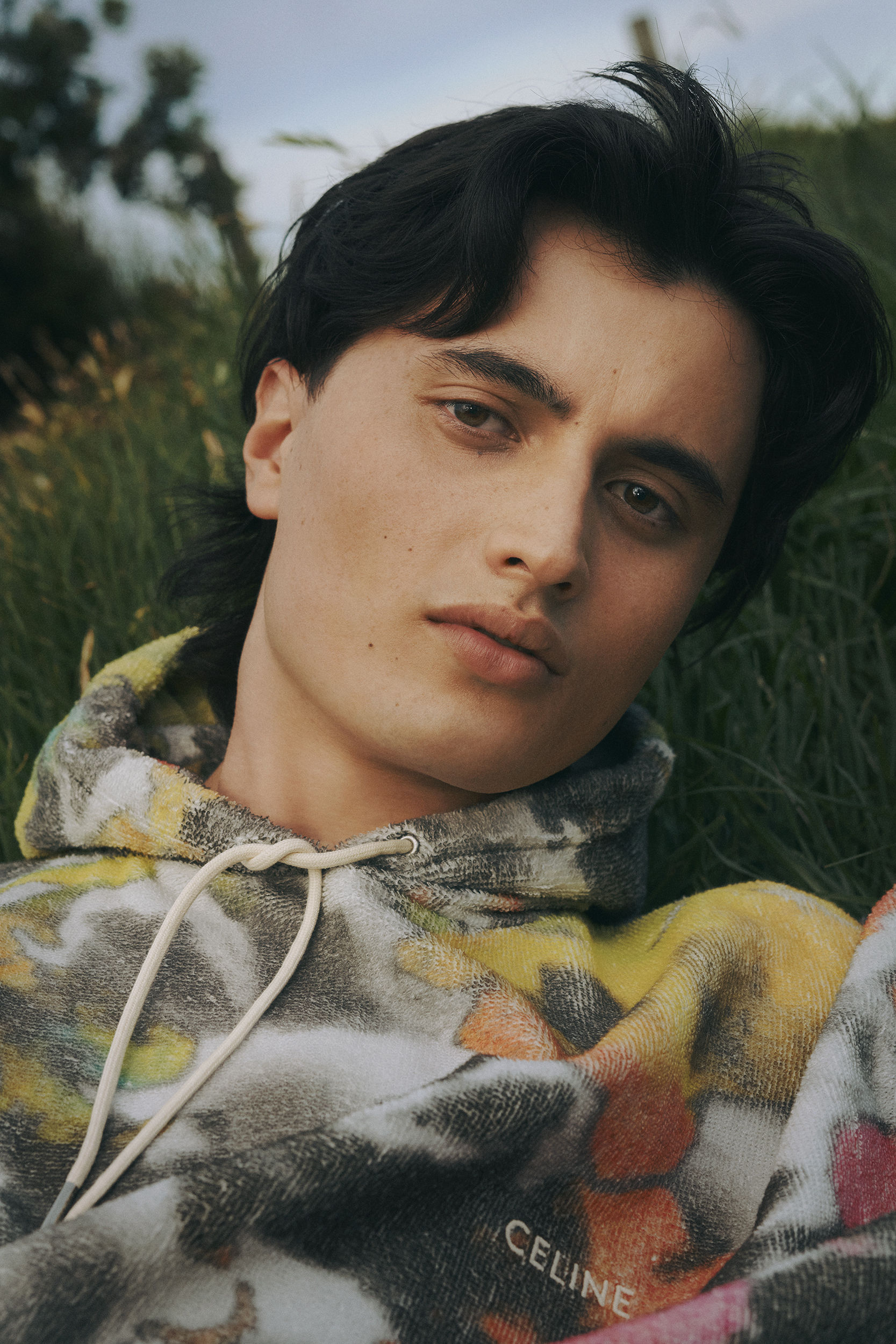En route to his shoot for VMAN, musician Nick Ward chatted with our VMAN 52 cover star (and fellow Aussie) Troye Sivan about their collaborative track in Sivan’s 2023 album Something to Give Each Other and Ward’s Sydney-based music collective, Full Circle.

TROYE SIVAN: Hey, Nick Ward. How are you?
NICK WARD: I’m good. It’s been a busy week and I have a bunch of busy weeks ahead—which feels silly saying to you because I know you’ve been really busy this year as well.
TS: It’s kind of slowed down for me, but I know how you feel. Album is totally done, right?
NW: Album is done. We’re just getting through the digital side of things, which I guess we could make easier for ourselves. I think I just get too obsessive. It almost feels like every choice is tied to like, complete downfall. I gotta get past that.
TS: Album booklet vibes? That’s what you’re designing and working through?
NW: Yeah, like vinyl and cover pictures and stuff like that. Everything for the first single is done and we’re just slowly churning it out. Two of our videos are done and I guess we’ll have three done by April or May.
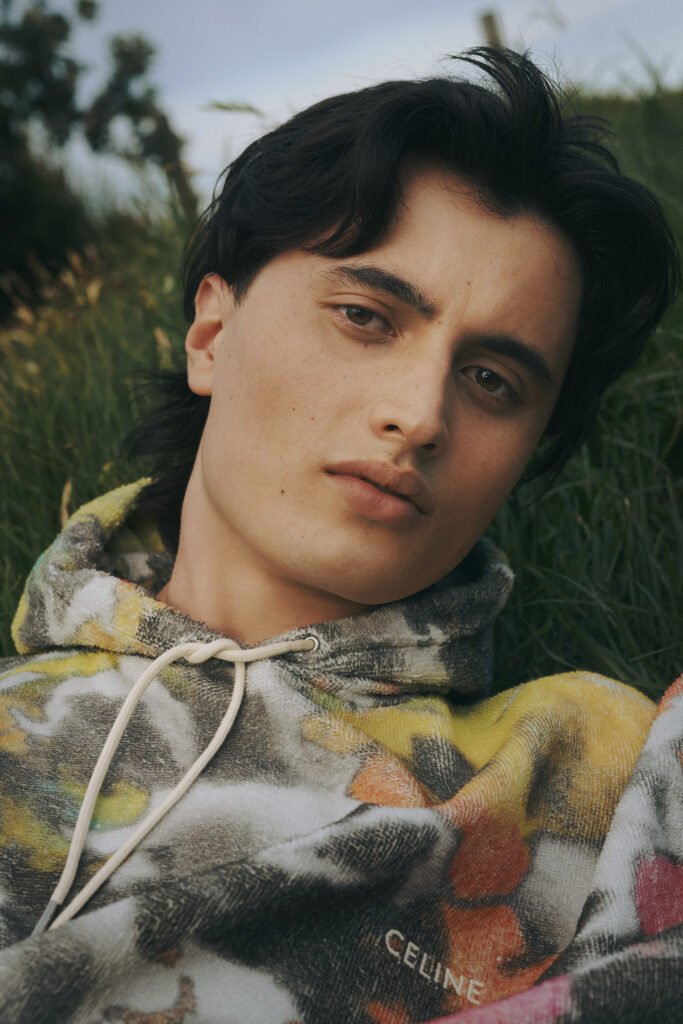
TS: That’s the way to do it. Does this process feel very different from the times before?
NW: Working with a budget is cool. It’s been great being able to pay people who’ve helped out on shoots in my backyard for so many years, Dad’s fried rice only is valuable for so long. But I’m trying not to let it change anything, really. And just approach things the same way, but with a budget. I think that way, you don’t have to compromise.
TS: Do you feel like it’s been easier to get what you want creatively? Or does it feel like you’ve got more to control now to keep the vision pure?
NW: The best part about collaboration is that the idea for a video or a song, or whatever it is, always turns into something else when you bring someone else on board. I think that just makes it more exciting. If anything, you want to control things to [be more like] the original vision, but part of collaborating with someone is also letting them bring something to the table too. I wouldn’t want to work with people if they weren’t bringing so many great ideas forward. How do you feel? Obviously, the scale and style of your videos have changed so much over the years. Was there anything going into this recent rollout with the videos that was different from the last rollout?
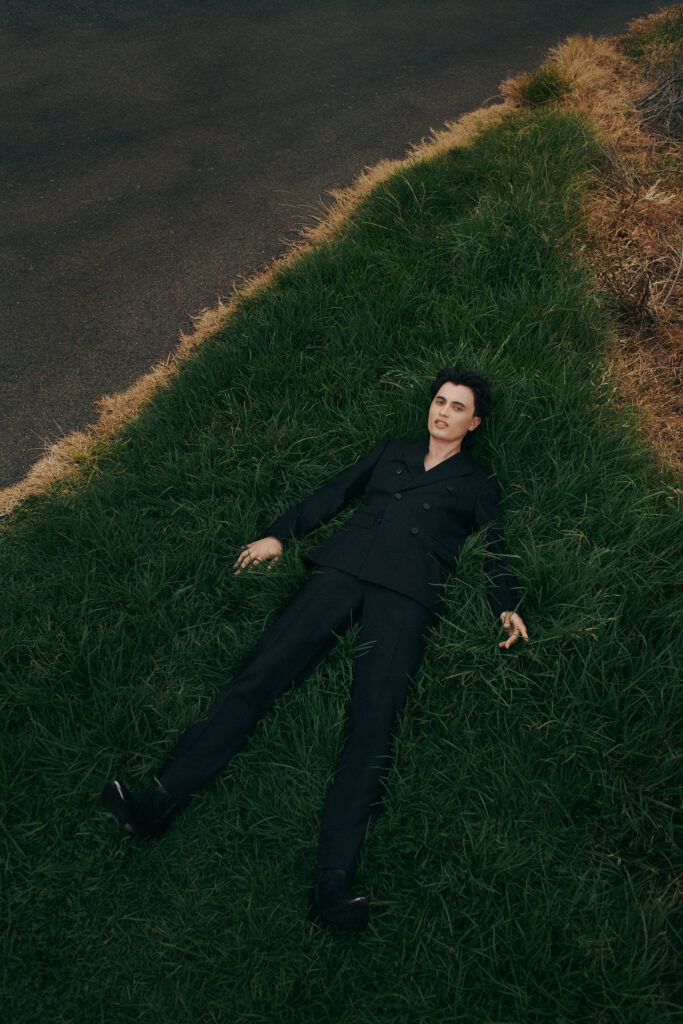
TS: I think the reason why I asked that question is because when I first got signed, the way I was told that music videos get made is: you get a bunch of directors to submit a treatment, you pick the treatment that you like, and you make the video with that director. And that was fun, but over time I just began to trust myself a little bit more. These videos felt much, much bigger than anything else that I made, but also much, much smaller. It was a tiny core team. Gordon Von Steiner, Stuart Winecoff, Kelly McGee, myself, and my management team. That was it. It sort of reminded me of the album-making process where it’s just this small group of people. Even though you could—if you’re lucky enough to have the resources—go as big as you want, that doesn’t necessarily mean better. I think that’s what I learned. How to utilize resources in the right moment, and not just take them because you’ve got them.
NW: I think that energy and camaraderie is something you can really see on screen. You can tell when someone does a video and they don’t know anyone on that set, and no one’s talking to each other. But what’s so great about your videos is that it does feel like people are hanging out and the camera is just a fly on the wall.
TS: Honestly, a big source of inspiration for me when we were making the album—and going into the visual side of it—was Full Circle. I was so inspired by the purity of the collaborations. You can tell that you’re making it with friends and people that you love. There’s something rowdy about it in a way that I really, really like. It feels youthful in a nice, fresh, exciting way. You’re like, oh shit, this is what I want to be paying attention to. This feels very inspired.
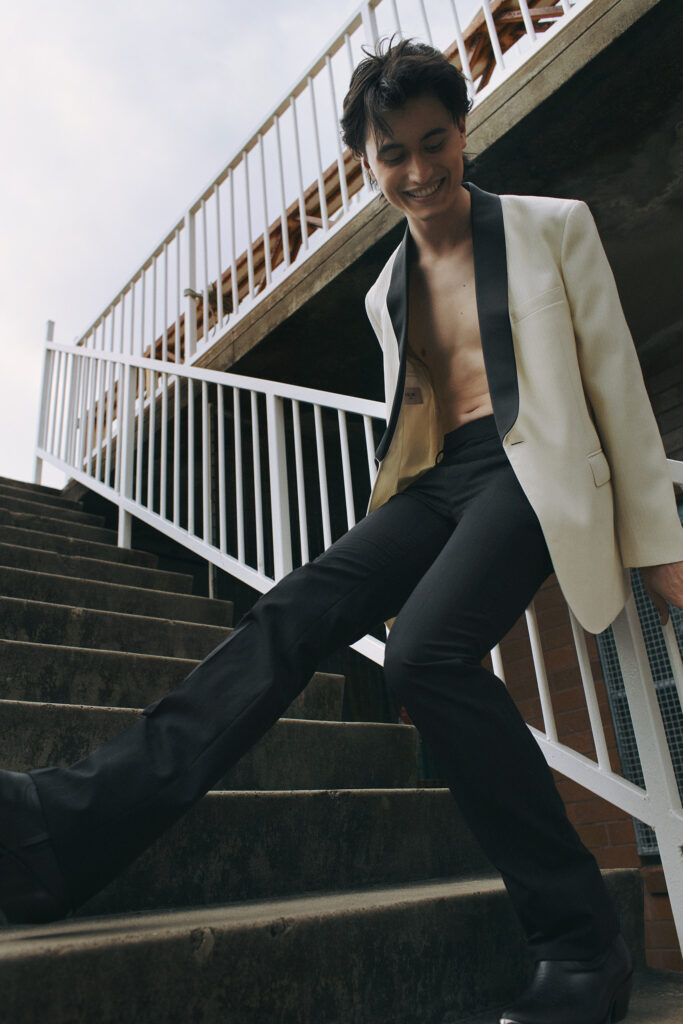
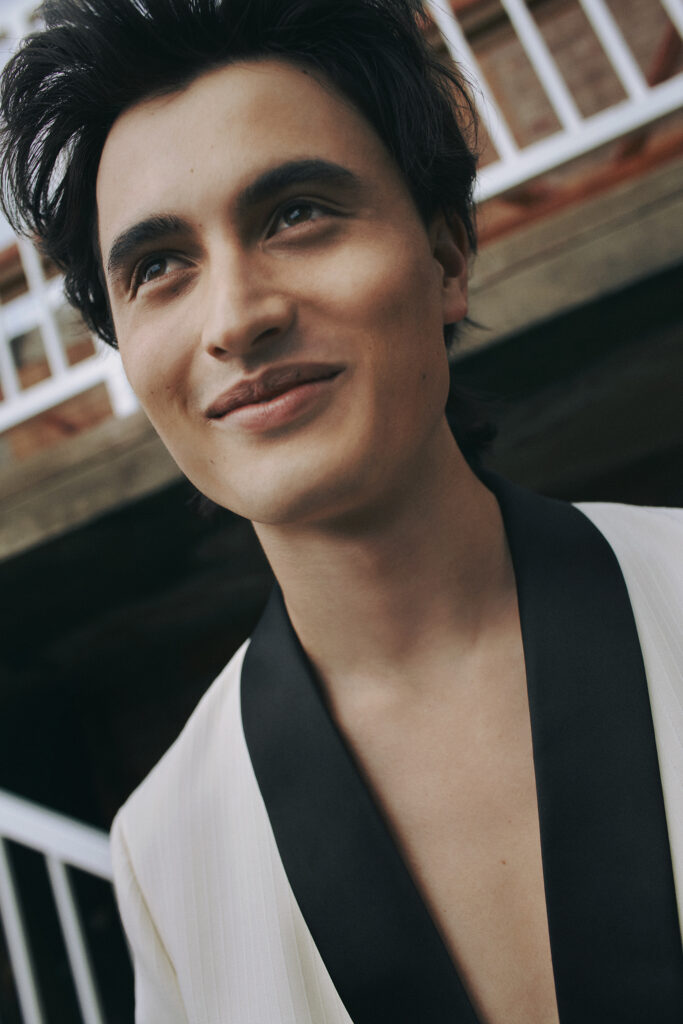
NW: Oh, that’s really sweet. Thanks so much.
TS: I also want to ask about something that stuck out to me so much in the album: how much identity is in it. Has that always been a source of inspiration for you?
NW: That’s a really good question. My music has always been about identity in some way, whether I like it or not. I think it’s interesting, listening back to old songs or things you’ve written and you can almost see your younger self working through something that you would go on to realize afterward. For the album, once I realized that it was going to be an album, I wanted it to be a culmination of everything that had happened in my life up until that point. I think that in a couple of years, it’s gonna be interesting looking back at the record and understanding things that I’m probably not 100% aware of writing.
TS: I think similarly about music. Of course, I’m writing it for myself. But I’m also writing it for this like, imaginary third party that, of course, for the first time you have to introduce yourself, you have to tell them everything that’s happened up until this point. Then the albums end up feeling little updates of where you’re at in life.
NW: Do you think that making an album is your preferred format for music? Or are you interested in exploring other formats of releasing music as well?
TS: I love exploring. For me, an album is a big, once every five years project. It’s the most intimidating thing in the world to start from nothing and by the end you have this world you’re building. You want to create something that people are gonna live their lives to and remember. The tour, I have loved so much more than any other album. I’ve loved living in the Something to Give Each Other world.

NW: I think I learned so much from our trip to Stockholm. Seeing how you guys approach music just completely flipped my shit. It’s almost like being an editor and you’re thinking what is the most concise line? I think it changed the way that I made music because I’m not a great like editor of myself a lot of the time. I’ll let myself go on crazy tangents.
TS: The irony of you saying this is the reason why I brought you in is because I was like, we need to shake things up around here. I wanted some of that rowdiness that ended up happening.
NW: That ended up converting me instead? So funny.
TS: It just goes to show that there’s such beauty and value in all creative processes.
NW: I think you kind of almost need to, like find a new process on each record or something in order to make it fun for yourself. The audience can hear it as well, when things have been approached differently, too.
TS: I want to ask you about collaboration when it comes to music because you’re so self-sufficient. What makes you bring in a collaborator for a song?
NW: I think my process for a lot of the songs on the album has been like, starting a day with someone and getting a bunch of ideas or jamming, and just recording a bunch of keyboards at the same time. I’ll take that day and try and flesh it out into a song, and edit it. I think that has been my favorite kind of way to work. I hope the people I’m collaborating with are happy to do that as well and that they don’t feel cut out of the process too early. I don’t know, I think that there’s something about maintaining the potency of an idea and not trying to lose what you love about the demo, you know?
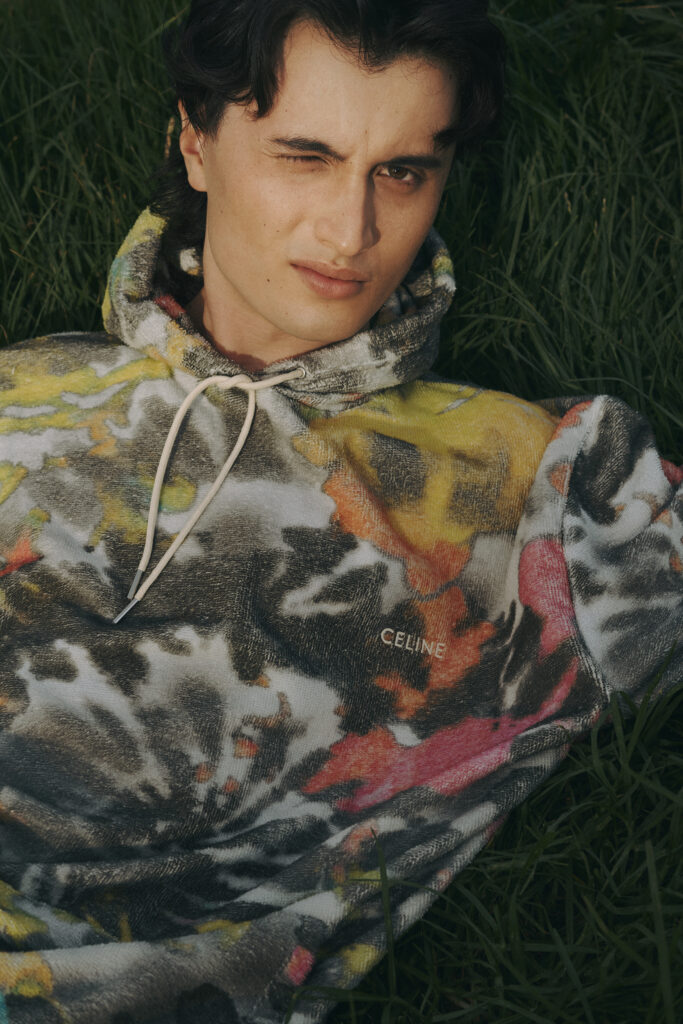
TS: I think that’s really cool. Just recognizing that alone time is also really special. That’s probably why the album has such a strong sense of identity. Did all of the songs start as collaborations?
NW: I’d have to look at the tracklist again, I think most of them did but there were also some things that I did on my own. My brother is probably my biggest collaborator, who’s always kind of floating in and out of my room.
TS: Is he honest with you?
NW: Very. Which probably inspired me to be tough on myself—not in a bad way, but I think that he’s probably the person I show everything to first.
TS: Does he make music or is he musically inclined?
NW: He’s played some instruments on some songs but he doesn’t like making music. He can play music [and] he’s got a good ear. It’s great to share demos and stuff with people who don’t necessarily know how to produce because you can kind of get a gut reaction on things.
TS: How do you respond to negative feedback? Do get upset or do you take it on the chin? How do you deal with it?
NW: I just plan for it. What made this album different was not really showing it to anyone while I was making it. The last EP I did, it was like I had a Zoom session every week. Which kind of helped me finish it because it was like, ‘Okay, fuck, I’m showing my friends [a track] on Friday. I need to finish these songs before then and get notes.’ With this new album, I felt a lot more confident. I just made up my mind myself this time. How about you? With feedback stuff, what’s your process?
TS: I think I’m pretty good at getting feedback. But I also think, at this point, 99% of the time I know what I want, for better or worse. And I’m down to own that it might not be the right decision, it might not be the one that other people like or whatever. The collaboration and the feedback happen while we’re actually making the thing. By the time it’s done, I’ve kind of arrived at a place where I’m like, ‘No, this is done. Whether you like it or not, is kind of irrelevant. This feels the way that I want it to feel.’ I feel quite self-possessed in that way where once I’ve made my mind up about something, I feel pretty solidly about it.
I think the only feedback that would hurt is the feedback that I thought in the back of my mind, and was like, ‘Fuck! You’re right. I thought that too.’ I feel like we should get some [of VMAN’s] questions in. Can you describe the music community in Sydney and Melbourne? Are they different? How are young people occupying their time in Metro Australia? I guess, yeah, we should tell the world about Australia.
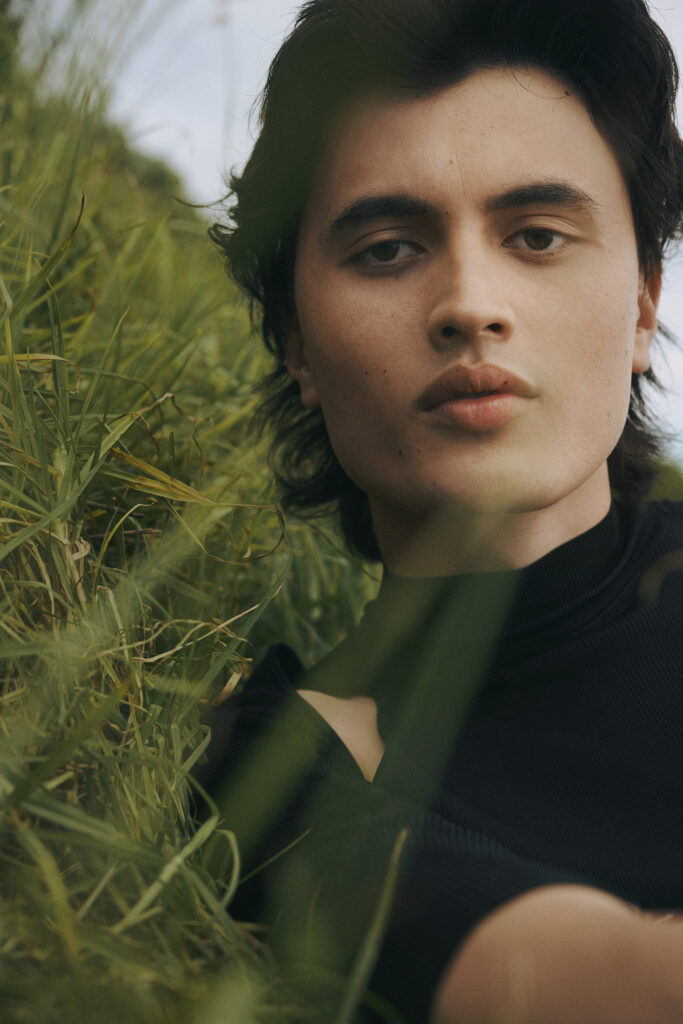
NW: Do you want to lead this one?
TS: No, I don’t. Because I feel like you’re more plugged in than I am. Like, I left when I started making music professionally. So I’m curious about your answer to this. Could you give us a little rundown of the music scene or community here?
NW: I think that there’s literally like, so much of the best music in the world in Australia. But I just think that the industry isn’t designed in a way that it gets promoted, or gets on people’s radar.
TS: Internationally or domestically?
NW: I guess both? I think there’s a very homogenous sound that gets promoted. It’s a bit of like a self-fulfilling cycle where like, you know, artists growing up are like, ‘Oh, if I want to get these same opportunities, I guess I got to make that sound or, you know, compromise the art because of that.’ That said, I think that there are so many great artists—I know, there are a lot of great artists in Melbourne, but I think Sydney has a lot of great stuff going on. I’m also thinking of how to describe Sydney and Melbourne to an American audience. It’s very eclectic. A lot of dance, especially in Melbourne.
TS: I feel like party culture is very informative of the kind of music that works here. A lot of the time, the weather is really good and people want to dance when the weather is good. One of my favorite things about the Australian music community is—and I don’t want to sound patronizing or anything like that—because we’re not the biggest music market in the world, the desire to make music comes from this pure place. They make it with their friends and for their friends. There’s no shortage of talent and everyone’s really nice in the music community.
NW: I think that we’re on the brink of a new wave of music in Australia and, hopefully, people getting more excited by local music. I remember when I was in high school there was no difference between Jungle Giants and Vampire Weekend. They were the same. It didn’t matter that they were local. And I’m keen for that to happen again. You know?
TS: For sure. What other emerging Australian artists should we know about?
NW: Um, I guess this is like plugging my friends a bit, but I also do think that it’s true. I’m in a collective called Full Circle with artists like FRIDAY*, Breakfast Road, SOLLYY, Zion Garcia, and Dylan Atlantis. All super talented crew, making stuff from a really pure place, throwing their shows, and just doing everything on their terms. I can’t say that I don’t have a bias, but those are some of my favorite artists, regardless of whether they’re my friends or not.
TS: Sorry, last question. Is this your first time doing promo? Like legit promo where you’re going around doing a million interviews and stuff?
NW: Yeah, I thought I’d done some stuff in the past but no, not at this sort of level.
TS: How are you finding it?
NW: It’s sick. I mean, like all the shoots and stuff have been so fun. It’s the best. I get the easiest job on the set. I just got to dress up and—
TS: Stand there and look cool.
NW: And talk about my own music. It’s a great time.
TS: That’s a good way to approach it.
NW: These are the best problems to have in the whole world. And it’s been so working through it with friends.
This feature appears inside the pages of VMAN 52: now available for purchase!
Photography Dean Podmore
Fashion Abby Bennett
Interview Troye Sivan
Makeup Gillian Campbell (Artist Group)
Hair Fernnando Miranda using Kevin Murphy / Dyson Hair
Production Matt Withaar
Digital technician Orson Heidrich
Production assistant Vasja Senft
Location Christison Park
Special Thanks Mariam Dib
Discover More









